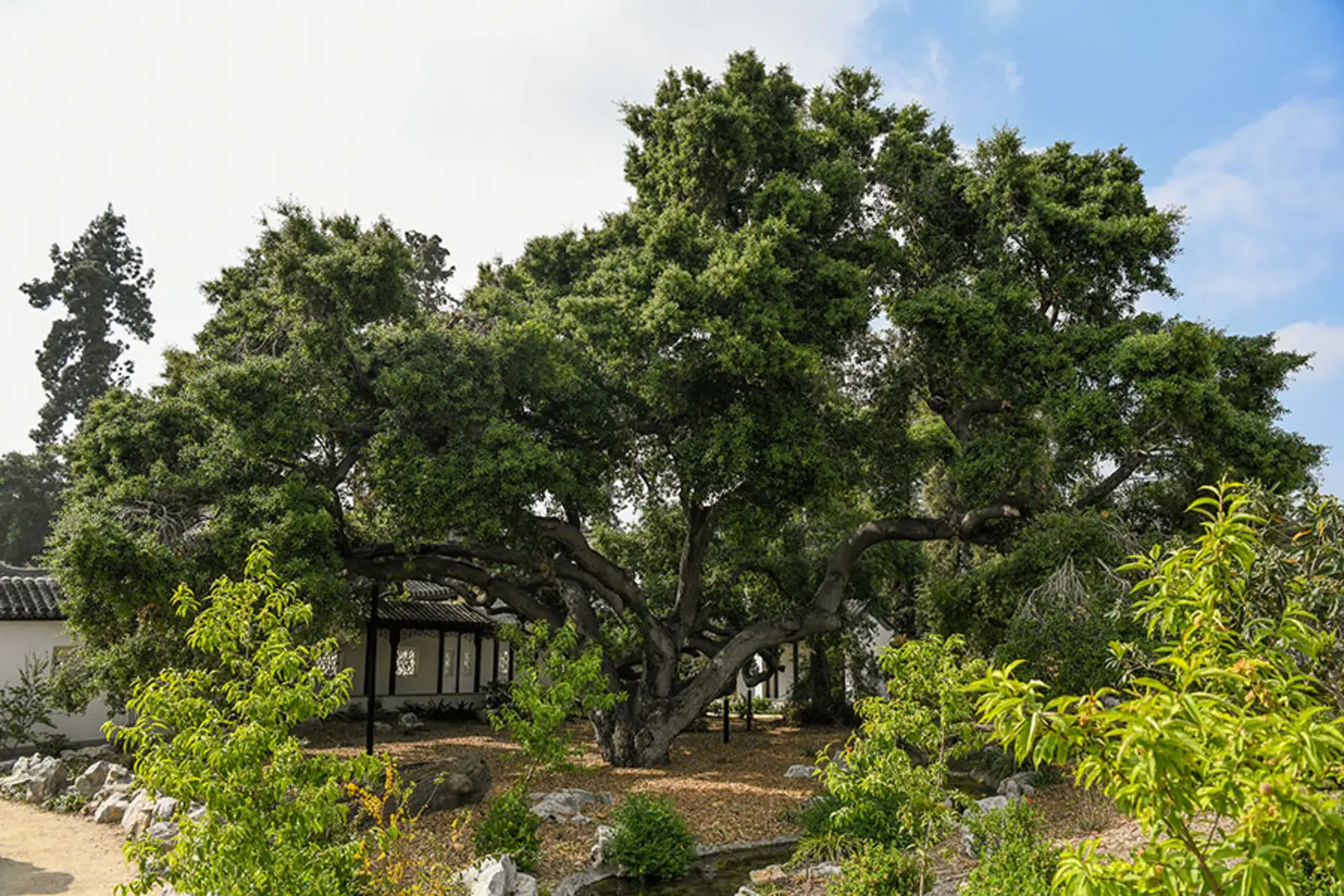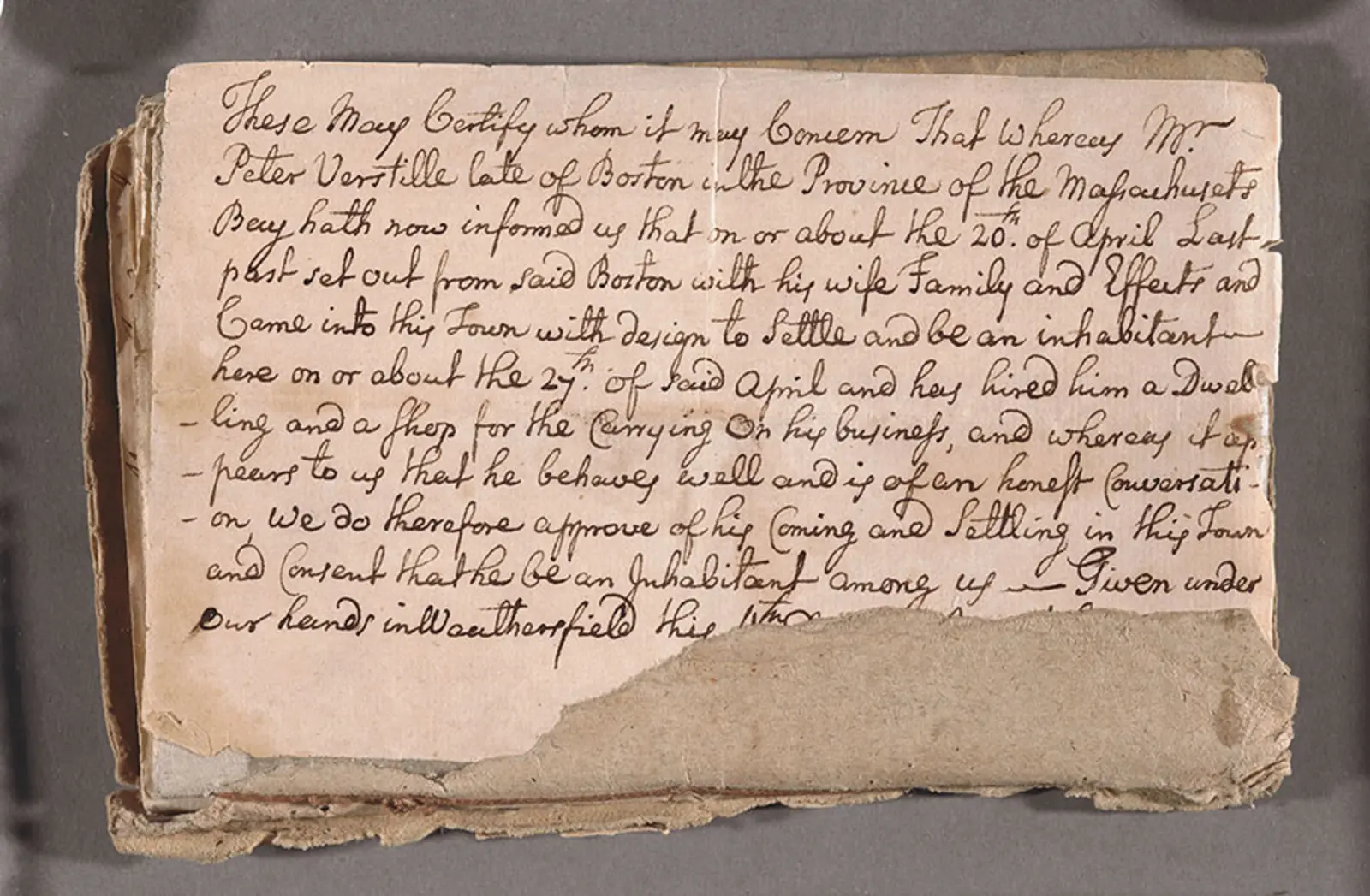
Collage of Verso highlights from 2023.
The Huntington is a place of wonder, beauty, and intellectual engagement. With the following selection of Verso posts, we invite you to revisit some of The Huntington’s 2023 highlights.
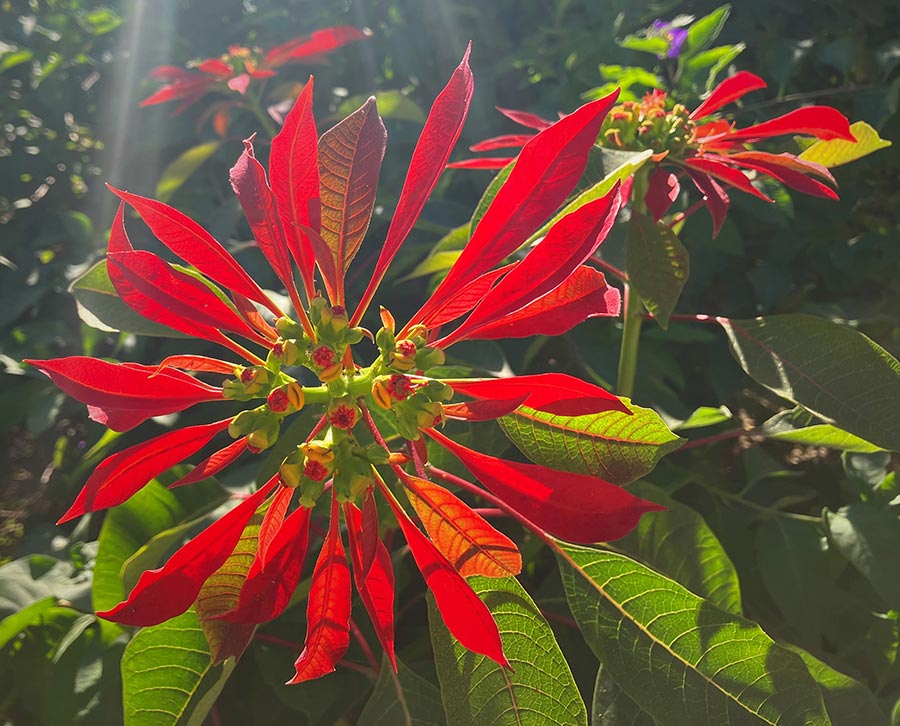
Euphorbia pulcherrima ‘St. Louis Red’ is an old cultivar of Poinsettia that can reach 8 feet in height, making it better suited for growing in garden landscapes than in pots. Photo by Sandy Masuo. | The Huntington Library, Art Museum, and Botanical Gardens.
We began 2023 with a survey of winter-blooming plants at The Huntington. Hailing from around the world, these plants put on floral performances that add color and vibrancy to the landscape at a time of year when you least expect it.
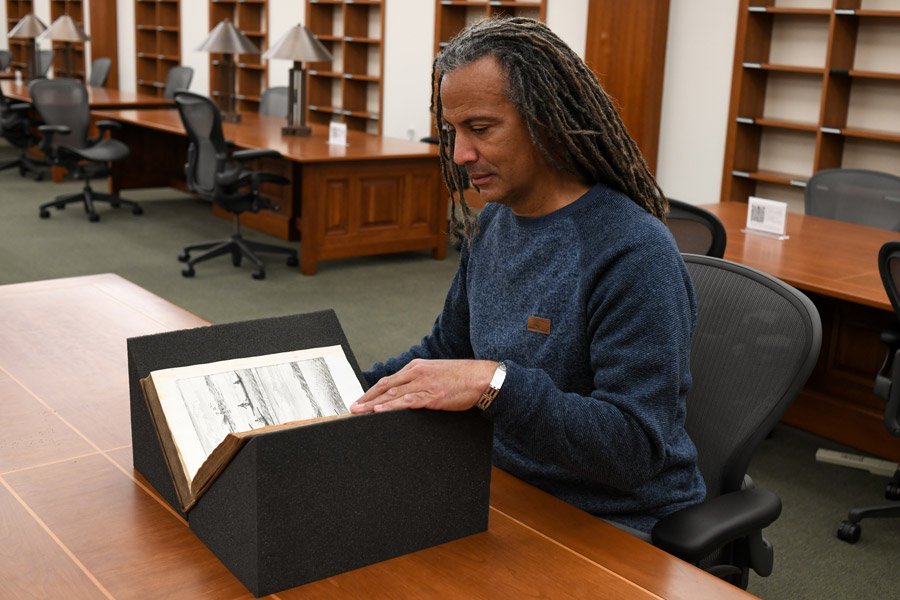
Kevin Dawson—associate professor of history at the University of California, Merced, and the recipient of the 2022–23 Kemble Fellowship in Maritime History at The Huntington—conducts research in The Huntington’s Ahmanson Reading Room. Photo by Linnea Stephan. | The Huntington Library, Art Museum, and Botanical Gardens.
Kevin Dawson, associate professor of history at the University of California, Merced, and the recipient of the 2022–23 Kemble Fellowship in Maritime History at The Huntington, discussed his research for his second book. He investigates how enslaved Africans in the Americas re-created and re-imagined African maritime traditions, including swimming, diving, surfing, boat-making, canoeing, and fishing.
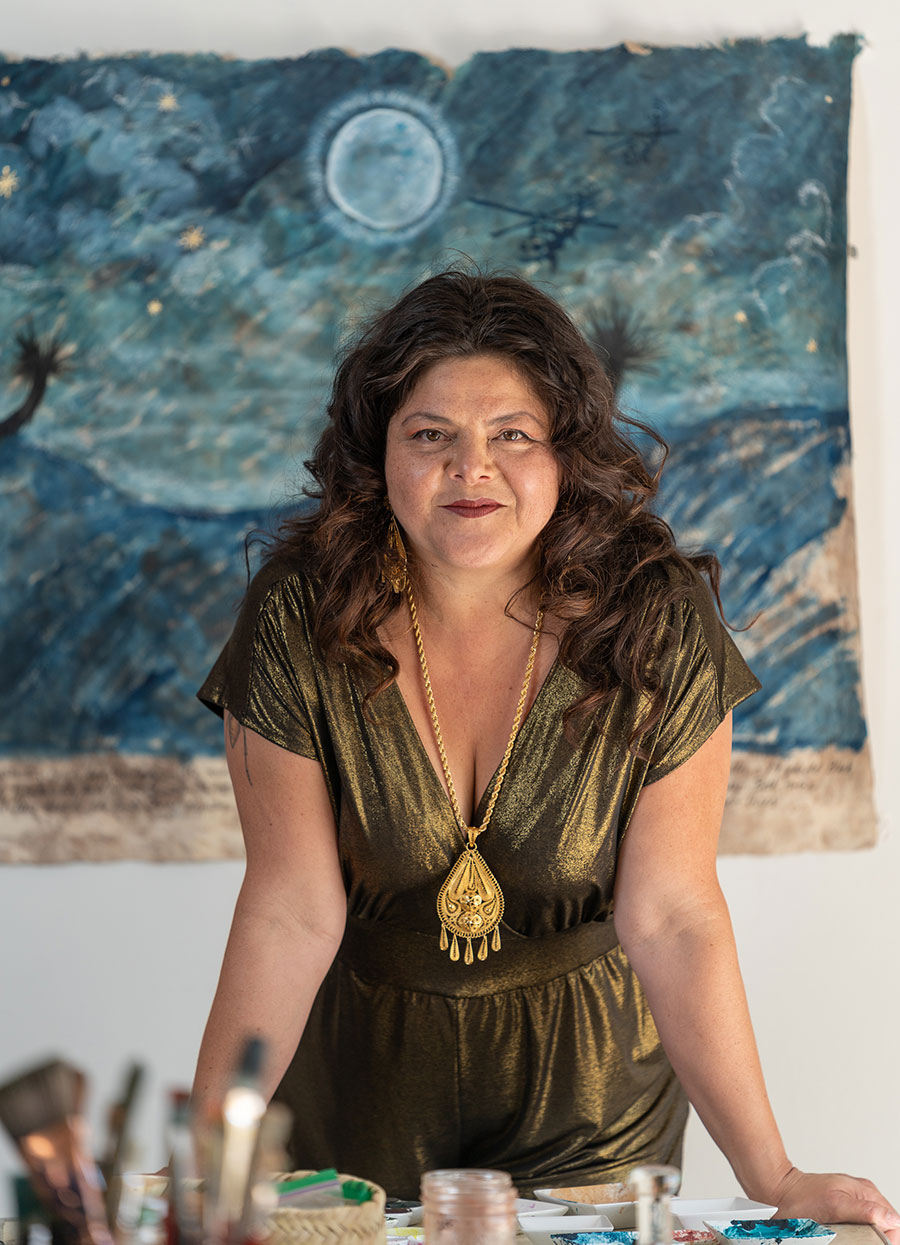
Sandy Rodriguez. Photo by Elon Schoenholz.
As the 2020–21 Caltech-Huntington Art + Research Fellow, Los Angeles–based artist Sandy Rodriguez created new artworks, including a map and a series of works on paper, that appeared in “Borderlands,” a permanent collections installation that explores a more expansive view of American art history. Her research on native plants, colors, and paper recognizes and celebrates Indigenous knowledge and ways of representing the natural world.
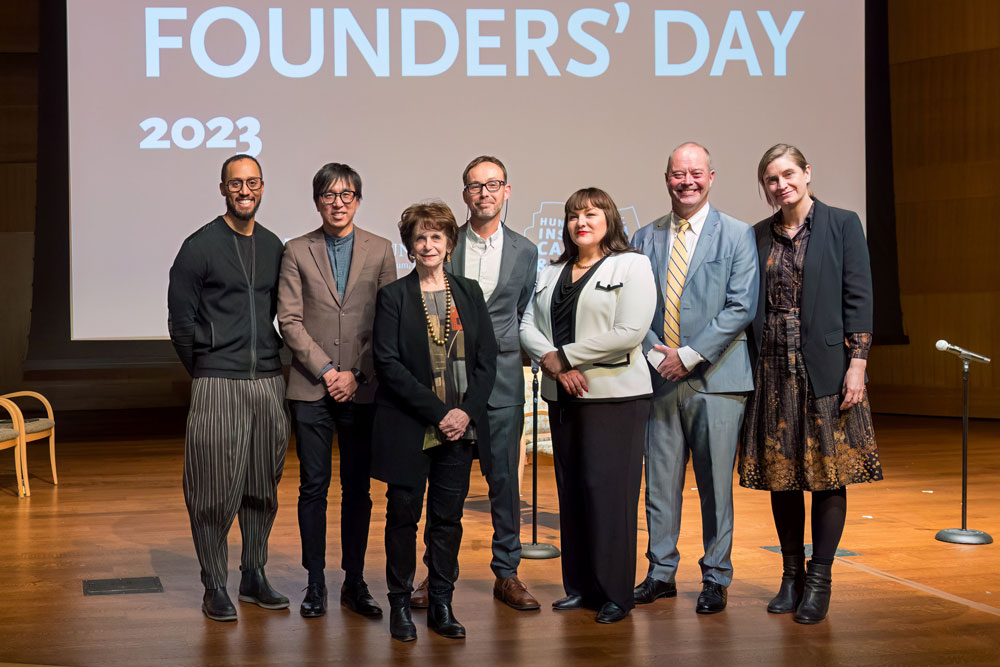
Presenters at the 2023 Founders’ Day in Rothenberg Hall (left to right): Silas Munro, Li Wei Yang, Karen R. Lawrence, Sean Lahmeyer, Pilar Tompkins Rivas, William Deverell, and Karla Nielsen. Photo by Sarah M. Golonka. | The Huntington Library, Art Museum, and Botanical Gardens.
Founders’ Day is observed annually at The Huntington in honor of Henry E. and Arabella Huntington’s roles in envisioning and establishing the institution. This year’s event was a lively departure from previous programs. Rather than spotlighting a single narrative to celebrate, it featured a suite of stories from across The Huntington’s collections.
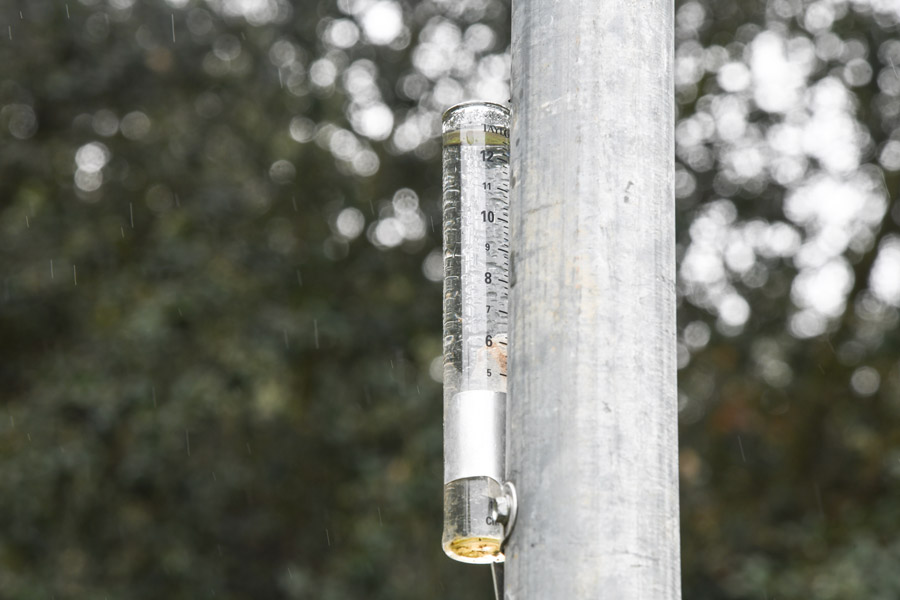
The Huntington received more than 30 inches of rain from January to March 22, 2023. Photo by Linnea Stephan. | The Huntington Library, Art Museum, and Botanical Gardens.
Water use at The Huntington is routinely monitored, and sustainability and water conservation remain among the highest priorities. So, each storm cycle has been an opportunity to gather data and observations for improving the institution’s own practices, which then can be shared with the public.
In the spring, four exceptional collections joined The Huntington through the generosity of the Library Collectors’ Council, a group of supporters who help fund the purchase of new items for the institution’s archives. The recent acquisitions included a microscopic manuscript-cum-drawing created for a French princess in the 17th century, an 18th-century album illustrating the royal production of tobacco powder in Spain, an 1810 manuscript account of a United States naval officer’s voyage down the Mississippi River, and an illustrated 18th-century scientific volume on the butterflies and moths of Georgia.
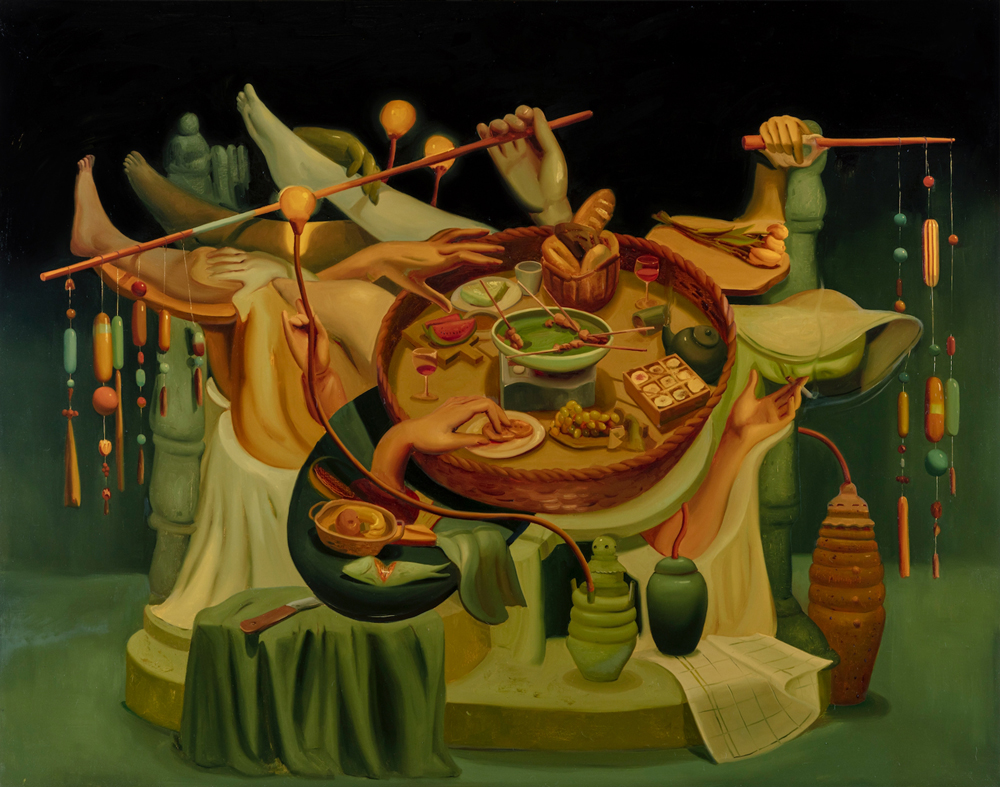
Dominique Fung (Canadian, b. 1987), Sans Les Mains, 2022, oil on canvas. Purchased with funds from Dominic and Ellen Ng. © Dominique Fung, 2022, courtesy of Jeffrey Deitch Gallery and Nicodim Gallery. | The Huntington Library, Art Museum, and Botanical Gardens.
As a site for the preservation of the wide-ranging histories, cultures, and perspectives that make up the Asian American experience, The Huntington’s Art Museum has been embarking on the active collection and display of Asian American art. These new acquisitions and installations expand the stories we tell about American art at The Huntington—taking us from Pasadena in the 19th century to Brooklyn in the 21st—and in media ranging from gunpowder to film to ceramics.
The Huntington’s plant collections include roughly 800 tree species that range from iconic California natives to representatives of habitats from around the world. Here are five must-see trees to appreciate during your next visit to The Huntington.
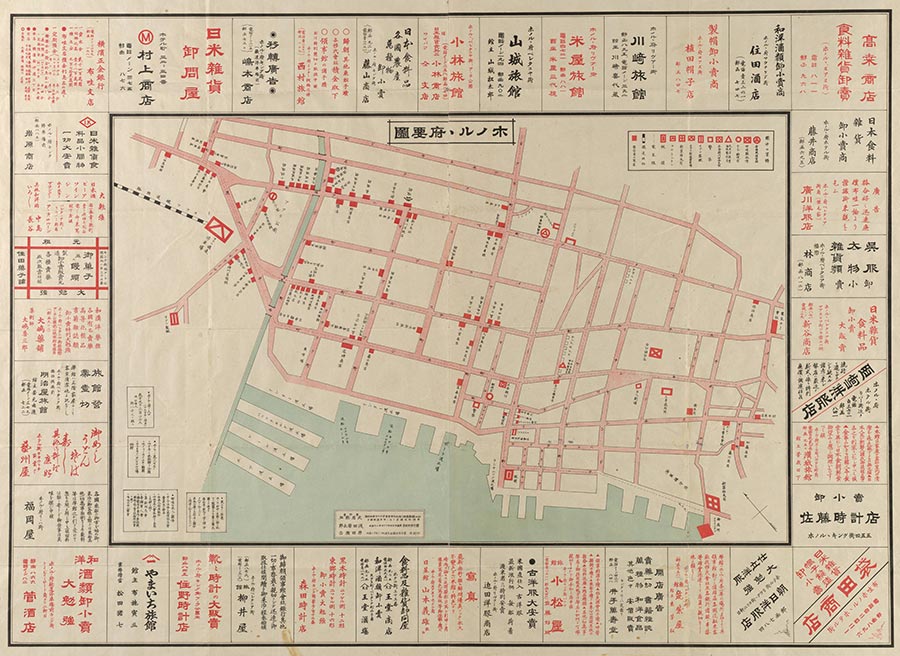
Nekketsu Takei, Map of Honolulu, 1906. | The Huntington Library, Art Museum, and Botanical Gardens.
In 1906, Nekketsu Takei, who was one of the most prolific Japanese writers in Hawai‘i during his time, produced at least two maps of Hawaiʻi to attract Japanese immigrants as well as to help newcomers familiarize themselves with the islands. Today, researchers use these maps to reconstruct old Japanese districts.
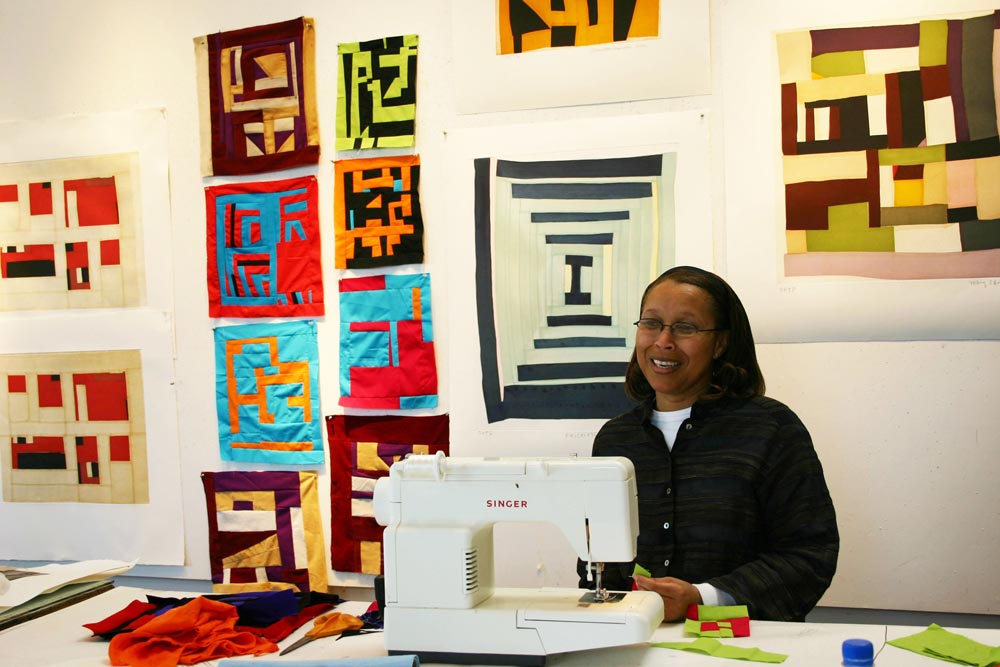
Loretta Bennett at the Paulson Fontaine Press artist residency. | © Image courtesy of Paulson Fontaine Press.
The Huntington’s “Gee’s Bend: Shared Legacy” exhibition celebrated the culture of quilts within Gee’s Bend and the quilters themselves as world-renowned artists. Collectively, these works represent not only the tradition of quilts but how quilts can be used to transform a community’s past, present, and future.
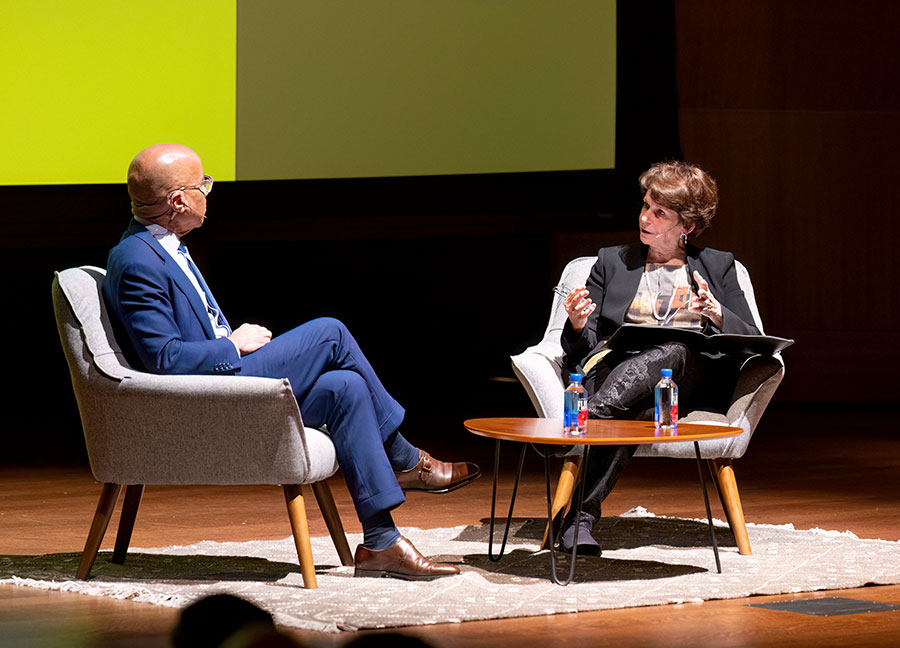
Ford Foundation President Darren Walker and Huntington President Karen R. Lawrence engaged in a compelling examination of the relationship among the arts, humanities, and philanthropy. Photo by Sarah M. Golonka. | The Huntington Library, Art Museum, and Botanical Gardens.
In sitting down with Ford Foundation President Darren Walker for the first “Why It Matters” event of the year, Huntington President Karen R. Lawrence set the stage for a lively conversation. They addressed a range of issues for a packed auditorium—from the changing and challenging post-pandemic landscape of philanthropy to the role of the humanities and the arts, which Walker characterized as “the oxygen of democracy.”
Cover of the diary and memorandum book of the Boston merchant Peter Verstille. The diarist sailed from Boston to London in September 1768, on board the Amazon. The largest portion of the diary covers his stay in London from early December 1768 to late April 1769. | The Huntington Library, Art Museum, and Botanical Gardens.
The Huntington holds the diary of a merchant who wrote about his time in London from December 1768 to April 1769. It offers a rare first-hand account of an American colonist’s experiences in London, just as relations between Britain and North America were deteriorating.
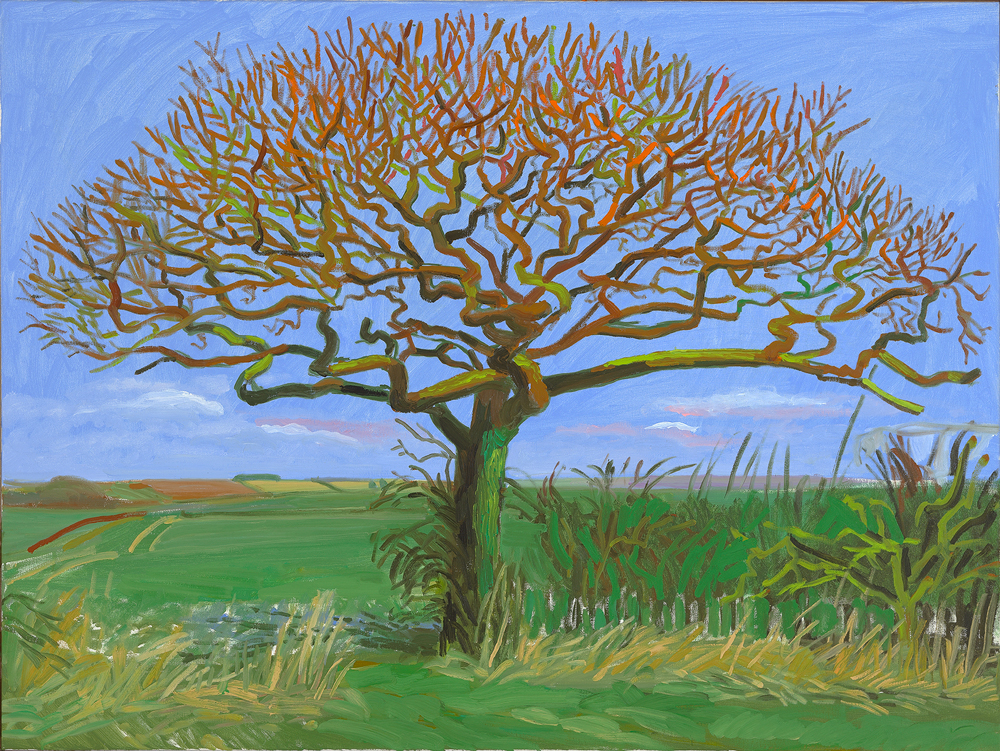
David Hockney, Tree on Woldgate, 6 March, 2006, oil on canvas, 36 x 48 in. The Huntington Library, Art Museum, and Botanical Gardens. Gift of Gregory Evans in memory of Dagny Janss Corcoran. | © David Hockney. Photo credit: Richard Schmidt.
The Huntington acquired David Hockney’s painting Tree on Woldgate, 6 March, along with 17 works on paper that include drawings, prints, and watercolors. Donated by Gregory Evans, who had a close romantic and business relationship with Hockney for many years, the works showcase an intimate side of the artist.
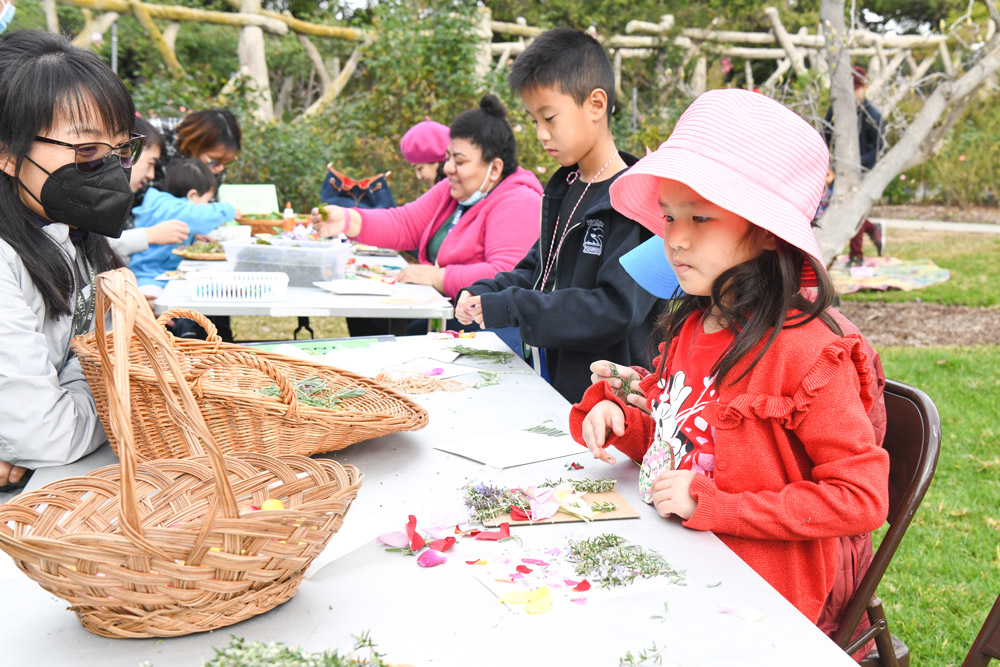
Exploring the textures, colors, and shapes of plant materials leads to inspired creativity. Photo by Linnea Stephan. | The Huntington Library, Art Museum, and Botanical Gardens.
With the aim of engaging a more diverse cross section of people, The Huntington created the Meet Me in the Garden program as a way of welcoming visitors with different sensory needs. The program is geared toward families with members who identify as disabled, but all guests can participate.
Read “Senses and Sensibility: Sensory Adventures in the Gardens”

With President Karen R. Lawrence, Hilton Als discussed the origins of the exhibition series that he originally curated for the Yale Center for British Art and that subsequently came to The Huntington. Photo by Linnea Stephan. | The Huntington Library, Art Museum, and Botanical Gardens.
For the fall installment of the “Why It Matters” series, Hilton Als, the inaugural recipient of the Hannah and Russel Kully Distinguished Fellowship in American Art, joined Huntington President Karen R. Lawrence in a conversation about his career as a critic and curator, the relationship between visual and textual forms, and the endless inspiration found in The Huntington’s collections.

From left: The Huntington’s photography curator Linde Lehtinen, photographer William Camargo, and The ƒ/Ø Project’s Barret Oliver look at Camargo’s set of albumen prints from Origins & Displacements, 2022. The Huntington acquired the set in September 2023. Photo by Deborah Miller Marr. | The Huntington Library, Art Museum, and Botanical Gardens.
Photographer William Camargo has a talent for transporting the viewer to a precise moment in time, often delivering a jarring history lesson in the process. His series Origins & Displacements amplifies issues of gentrification and the invisible labor in his hometown of Anaheim, California.
Read “William Camargo’s Protest Pictures Give Voice to History”
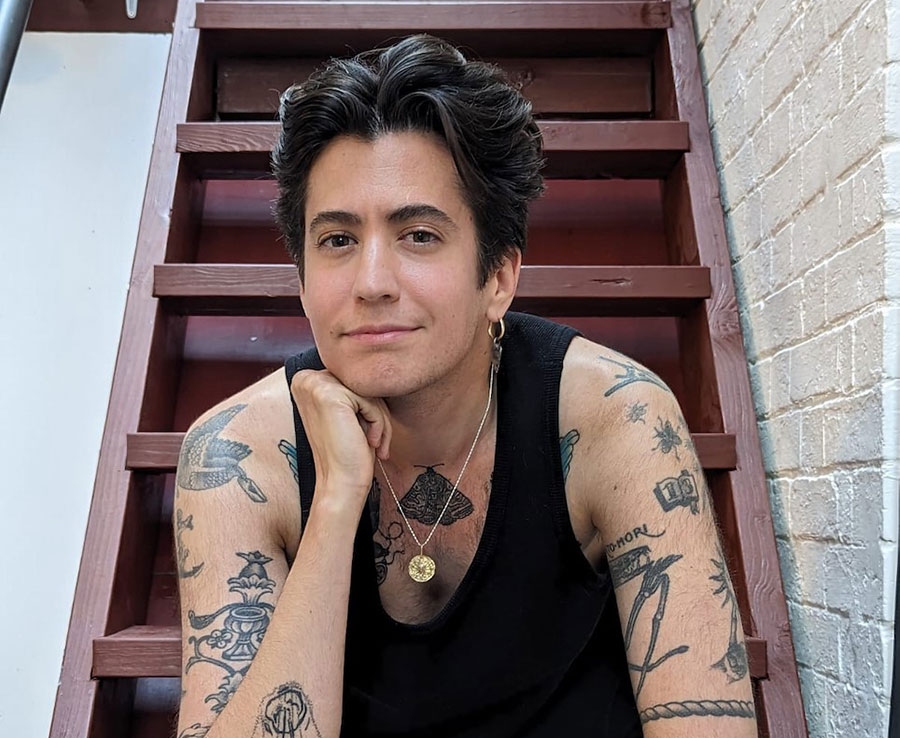
Brooke Palmieri, the 2023 writer-in-residence at The Huntington. Photo by Jamie Bauermeister.
Brooke Palmieri, the inaugural writer-in-residence at The Huntington, examines traces of queer history as a way of building a wider understanding about the relationship between what survives from the past and how that information is or is not incorporated into our sense of history.
Read “Queering the Collections: A Tale of Two Libraries”
We appreciate your interest in Verso and look forward to sharing more stories about The Huntington in 2024.
Kevin Durkin is the editor of Verso and the managing editor in the Office of Communications and Marketing at The Huntington.



